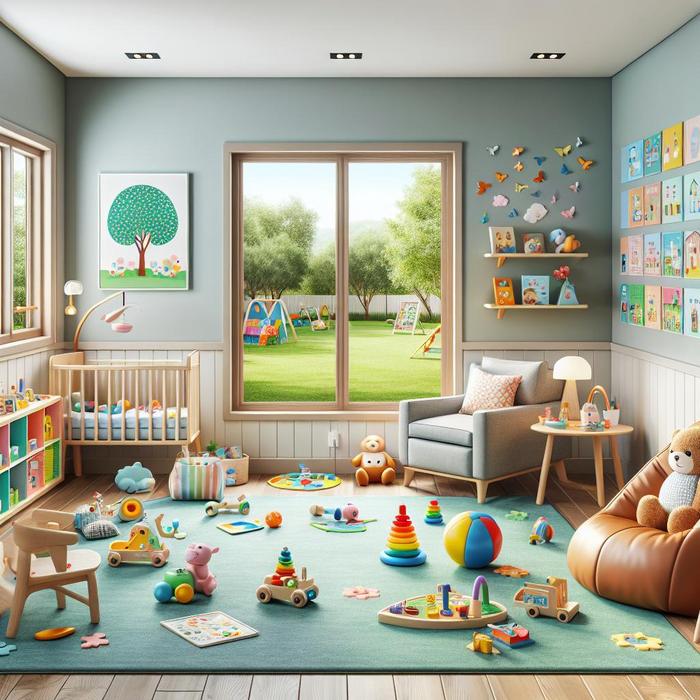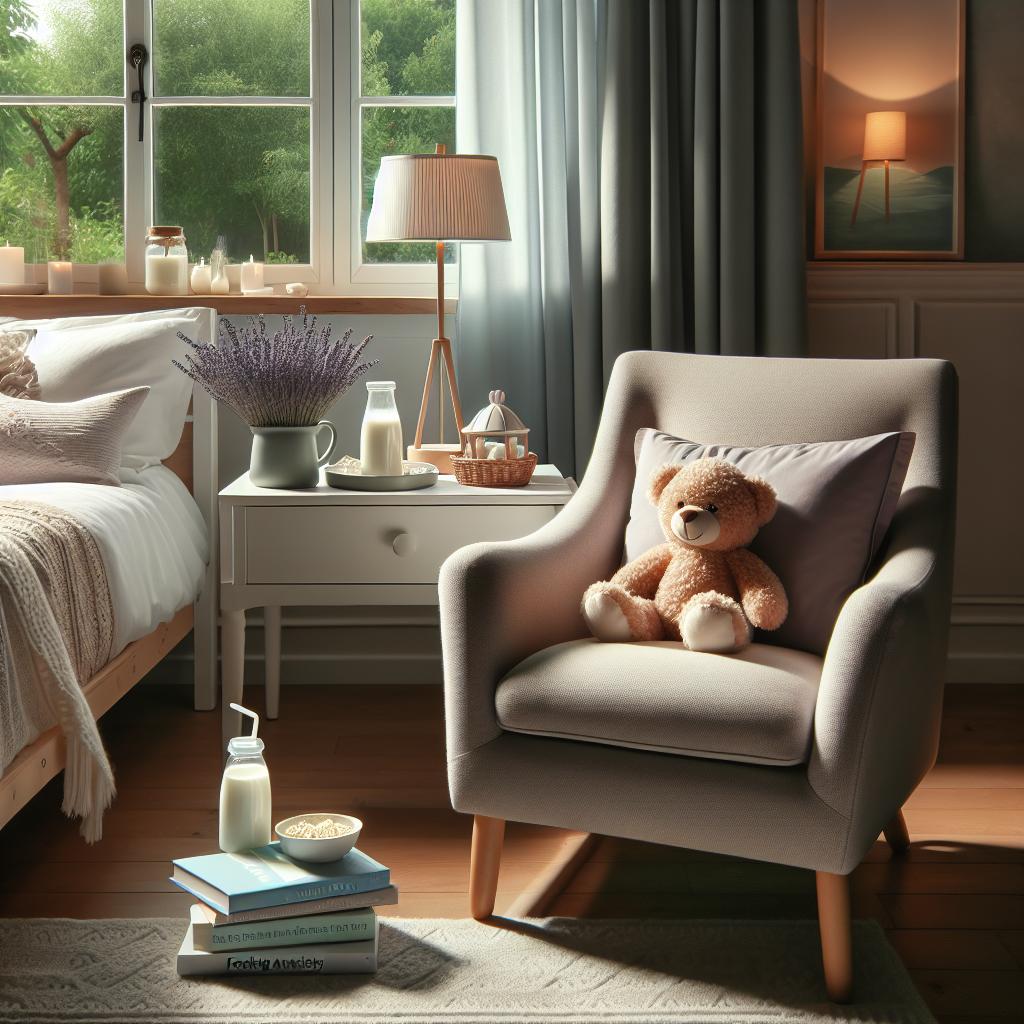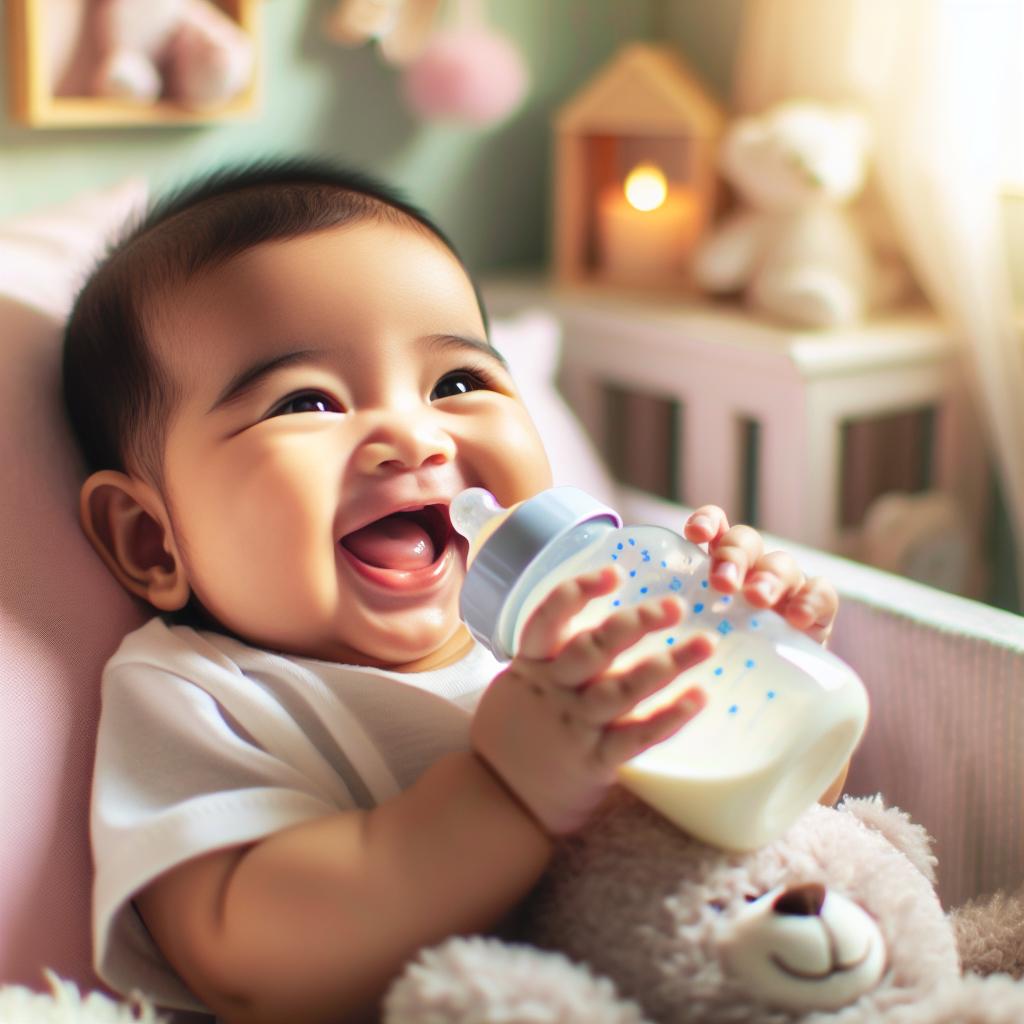Understanding the Importance of Stimulating Environments
The environment in which your baby grows up plays a significant role in their cognitive, emotional, and physical development. Research from UNICEF supports this, highlighting how a stimulating home environment can boost a child’s learning abilities and life-long development potential. But what does a ‘stimulating environment’ entail? Let’s delve into this concept further.
What Makes an Environment Stimulating?
A stimulating environment is one that offers a variety of age-appropriate activities, toys, materials and experiences that promote learning and exploration. It encourages babies to use their senses, think, reason, and solve problems. It’s not necessarily about having expensive toys or gadgets but creating an environment that inspires curiosity, exploration, and discovery.
Key Components of Stimulating Environments
To create a stimulating environment for your baby, consider including these key components:
- Safe Physical Space: Safety is paramount. The environment should be safe for your baby to explore independently. This involves baby-proofing your home and ensuring there are no potential hazards.
- Sensory Experiences: These stimulate your baby’s developing senses. Use toys and materials with different textures, colors, sounds, and smells.
- Nature and Outdoor Experiences: Connecting with nature boosts physical and mental well being. Include plants in your baby’s environment and encourage outdoor play.
- Open-ended Toys: Toys without a fixed use encourage creativity and problem-solving skills. For example, blocks can be stacked, counted, or used to create different shapes.
Creating Stimulating Experiences at Different Stages
The sort of stimulation your baby needs evolves as they grow. Here are some ideas for creating stimulating experiences at different developmental stages:
- Newborn to 3 months: At this stage, babies mainly respond to high-contrast visuals and sound. Mobiles, music, and verbally communicating with your baby are perfect. Always remember, even simple activities like changing a diaper can be stimulating if you talk and maintain eye contact with your baby.
- 3 to 6 months: As their motor skills develop, babies start to explore more with their hands and mouth. Teething toys, rattles, and soft blocks can stimulate touch and taste. Packing these toys in your diaper bag ensures your baby has stimulating experiences even on-the-go.
- 6 to 9 months: This is the stage where babies begin to develop more control over their movement. Provide toys that encourage reaching, grabbing, and transferring from one hand to another.
- 9 to 12 months: Babies start to understand cause and effect at this age. Toys like stackable blocks or pull toys motivate babies to experiment and explore.
In conclusion, creating a stimulating environment doesn’t require a significant investment or a large space. Instead, it requires conscious effort, creativity, and understanding of your baby’s developing needs. Keeping your home safe is the first step to such an environment, followed by continuously tailoring and adjusting it to your baby’s growth and development stages.
Enhancing Baby Development with the Right Support
Creating a stimulating environment for your baby can be a rewarding yet challenging task. However, remember that you are not alone in this journey. Engaging with the right support groups can provide you with additional insights, experiences, and ideas to enhance your baby’s development journey.
Always remember, every baby is unique and develops at their own pace. Therefore, it’s important not to compare but to focus on providing the best possible environment for your child’s growth.
The Importance of Routine for Babies
Routine in a baby’s life is as essential as a stimulating environment. Infants thrive in predictable environments. A consistent routine influences their emotional development and helps foster a sense of security and comfort. This routine includes a consistent bedtime, feeding time, playtime, and other daily activities. Consistency allows children to understand what comes next, thus reducing anxiety and encouraging a sense of control.
A regular routine also promotes healthy habits. For example, an established bedtime routine can foster good sleep hygiene that is crucial for your baby’s health and development according to the National Sleep Foundation.
Importance of Parent-Baby Interactions
Your interactions with your baby significantly contribute to creating a stimulating environment. This goes beyond just caretaking routines. Every little detail, from the tone of your voice to your facial expressions, impacts your baby’s development.
- Communication: Talk, sing, read, and have conversations with your baby. These interactions boost their language skills.
- Emotional Support: Expressions of love, soothing, cuddling, and responding sensitively to your baby’s cues build secure emotional attachments.
- Play: Engage in age-appropriate play with your baby. This creates opportunities for learning and bonding.
Research from the PBS has highlighted how crucial positive parent-baby interactions are to building an emotionally supportive home environment.
Fostering Independence
Establishing an independent-friendly space can be challenging, but it is essential for promoting your child’s confidence and sense of competence. Here are a few ways you can create such an environment:
- Provide accessible and safe spaces for exploration.
- Introduce self-help skills like feeding and dressing as early as appropriate.
- Provide opportunities for choice to foster decision-making skills.
- Offer encouragement and acknowledge effort over success.
For children, independence equates to empowerment. The Montessori Method emphasizes child-directed activity and learning, reinforcing the importance of an independent-friendly environment.
Incorporating a Baby-Friendly Home Environment
Incorporating a home design that is friendly to your baby can support their development journey. Child-friendly furniture, secured cupboards, easy-to-reach shelves, soft, non-slippery floors, and avoidance of sharp corners are a few ways to make your home baby-friendly, as pointed out by the Motherhood Center.
Staying Informed and Responsive to Changes
Staying informed about your child’s developing needs and being responsive to them is crucial. As they grow, their cognitive, emotional, and physical needs will evolve. By staying tuned into these changes and responding to them appropriately, you’ll continue to provide a stimulating environment for their optimal development. The KinderCare’s insights on infant environments stress this aspect.
Finally, remember, perfection is not the goal. Doing your best to tune in to your child’s needs and providing a safe, stimulating, and loving environment is key to successfully supporting your baby’s development journey.







